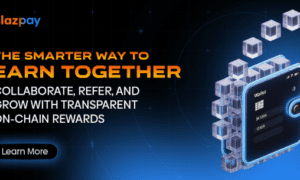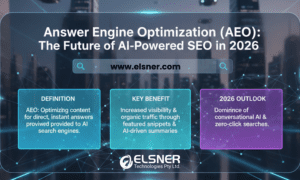Today, higher education is undergoing major changes. Universities use big data to improve learning. Data helps institutions track progress, personalize education, and optimize teaching. With the right analytics, educators adjust coursework to fit individual needs. Using predictive analytics helps students stay on track. This approach creates a more efficient and engaging learning experience.
Personalized Learning Through Analytics
All students learn at different rates. Some people grasp concepts quickly, while others need extra time to understand them. Traditional teaching methods do not always take these differences into account. Big data allows institutions to monitor student progress and provide the right support at the right time. Educators use patterns in scores, in participation, and in study habits to offer targeted help. Adaptive learning platforms are platforms that modify lessons according to an individual’s progress. These tools present new material when students are ready, reinforcing topics they struggle with. Personalized feedback improves understanding of the material. Alternate digital resources also support a variety of learning styles and make information more accessible. By taking advantage of technology-based education, students can balance their workload. Many juggle assignments, exams, and personal responsibilities. Service https://ca.edubirdie.com/pay-for-homework can help students with homework. EduBirdie experts specialize in personalized assignments across various subjects, ensuring high-quality work delivered on time. Such help encourages reducing stress and allows students to focus on deeper understanding of material. Institutions track student engagement using data analytics. If patterns indicate a student is struggling, intervention strategies improve retention rates. Early action prevents academic decline. Learning outcomes also depend on the level of participation in the educational process. Systems monitor engagement in lectures, discussions, and assignments. Instructors get alerts if a student disengages. Universities no longer wait for students to ask for help themselves. Instead, proactive outreach ensures timely support. Data-driven education adapts to each learner and replaces rigid, outdated models.
Optimizing Teaching Methods
Feedback is needed by professors to improve teaching. In traditional classrooms, collecting input required time. Now, universities analyze real-time data. Learning management systems count the engagement, quiz performance and people levels. Insights go into detail as to where students may be struggling. Instructors adjust lesson plans if many fail to understand a concept. They rework teaching styles, present other examples, and try to explain differently. AI driven platforms suggest relevant study materials suitable for an individual’s learning needs. Multimedia resources and interactive tools are used by Universities to reinforce understanding. Data helps educators assess teaching effectiveness. They are able to respond instantly because of the instant feedback. Professors identify gaps, improve lectures, and introduce new strategies. Lessons are relevant because they are analyzed in real time. By adapting to student needs, institutions enhance academic success and keep learners engaged.
Predictive Analytics and Student Success
By using predictive analytics, institutions can help students before problems begin. Universities look at attendance record, test scores, study habits to find patterns. Advisors intervene early in case of signs of academic struggles. It is established in research that predictive analytics can bring student retention rates to as high as 15%. It also helps in career planning. Universities keep a check on employment trends and forecasting them as such, designing courses with the industry demands in focus. According to a report by the National Center for Education Statistics, 72% of students who follow data-driven career guidance find jobs within six months of graduation. The predictive analytics allows learners to choose the right courses and have higher job prospects. Predictive models are also used by the financial aid departments. They identify students at risk of dropping out due to financial stress. Early intervention increases graduation rates. Universities create targeted support programs to keep students enrolled. Such a proactive approach augments the success level of the students and minimizes rates of dropout.
The Future of Big Data in Higher Education
The learning will continue to be shaped by big data. AI driven tools will be increasingly integrated in more universities to personalize the instruction. Real-time tracking will help students stay engaged. Data-driven insights will improve accessibility and provide better support for students with different learning needs. In recent years, studies indicate that 60 percent of higher education institutions deploy AI enabled learning tools. Tracking systems in real time boost engagement by 35 and help keep students on track with coursework. This is clear evidence that AI is becoming more popular in education.
The future of big data in education includes:
- AI-powered tutors offering instant feedback and guidance.
- Adaptive learning systems adjusting coursework dynamically.
- Predictive models detecting academic risks early.
- Automated grading tools reducing administrative workload.
- Smart scheduling optimizing student study time.
Privacy remains a major concern. Universities must protect student data and enforce strict policies. Responsible data use ensures ethical standards. Safeguards that are strong will permit big data to benefit education in a way that is trusted. Improved learning outcomes and student satisfaction will be a benefit to institutions which put security at the forefront.
Conclusion
Higher education is evolving. Learning in big data is more personal, efficient, and more adaptive. It is used by universities to track progress and optimize the teaching process. Predictive analytics helps students stay on course. Education will continue to get more and more effective as data-driven tools get better. It’s those institutions that are taking this change are going to give the students better learning experiences.
https://www.freepik.com/premium-photo/stack-books-with-laptop-table_24127439.htm



































